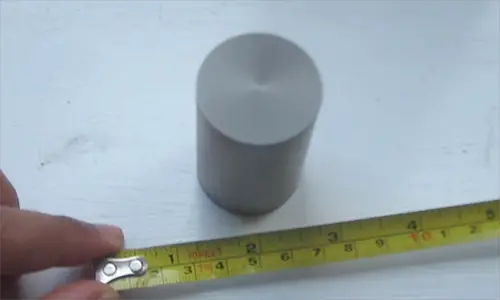Who wouldn’t be interested in knowing more about the metal with highest melting point? Or the heaviest metal to weave its way into biological systems?
Tungsten has been an element of awe to students and scientists alike. The vast spectrum of use it has been put to even in our everyday life is testimony enough of the importance of this metal.
From bulb filaments to electrode arcs this Spanish discovery that is abundantly found in China is a boon to the fields of science world over.
But such a superficial fascination with such a wondrous substance doesn’t do justice to its legacy, so let’s dwell into its various properties
Facts about Tungsten
1. The basic details
Tungsten is represented by the symbol W and has an atomic number of 74. The element has an atomic weight of 183.84 and exists as solid at an indoor temperature.
2. History behind the discovery of Tungsten
The discovery of Tungsten is credited to the Spanish chemists, Juan Jose and Fausto Elhuyar who in 1783 isolated the element from Wolframite. The first person however to mention the existence of the element was Axel Fredrick in 1757. The mineral was first in an Iron mine in Sweden.
3. Tungsten is a D block element
Elements that lie between the S and P block elements of the periodic table are called D block elements. They show transitional properties and are thus called transition elements.
Tungsten, true to its classification under the transition elements shows high ionization potential compared to s block elements but lesser than the p block elements.
4. What Tungsten really means
The element’s name, Tungsten originated from a Swedish word that meaning “Heavy stone”. Commonly, Tungsten is also called Wolfram from where it gets its elemental symbol.
5. Where is Tungsten found?
Tungsten is mainly obtained from the ores scheelite and wolframite.
6. What makes Tungsten different from other elements?
Tunsten has a very high melting point of 3,410°C (6,170°F) a highest for any metal. Another unusual property of the metal is the fact that it can retain its strength at very high temperatures.
7. Applications of tungsten
Pure metallc tungsten are used as filaments in bulbs and as heating elements in high temperature furnaces. They are also used as valves for reaction propellers in missiles and airships. Calcium and magnesium tunstates are also used in fluorescent lamps. They are also used as alloys due to their capacity to retain high temperature.
8. Why is tungsten called Wolfram?
The name Wolfram was derived from a tungsten containing ore called “wolframite” first discovered by European chemists. The word is derived from a German word “wolf’s foam”. It was named by tin smelters in Europe who noticed a reduction in tin yield in a particular type of ore. They felt this ore had something in it that devoured tin the way a wolf would devour sheep.
9. How does Tungsten look?
It is steel grey to white in colour and is usually a hard brittle solid.
10. Is tungsten harmful?
Tungsten compounds have been found to be highly toxic and the dust form the metal is regarded as a fire hazard. It is also known to cause explosions.











Leave a Reply